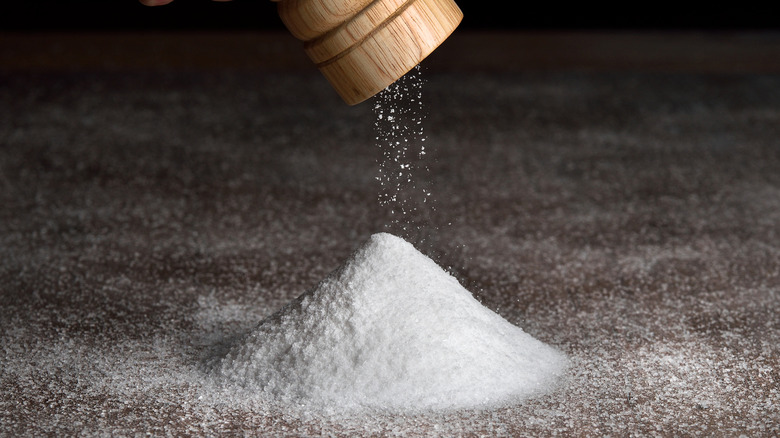What The FDA's New Salt Guidance Really Means For Your Food
In a sweeping new set of guidelines published this week, the U.S. Food and Drug Administration (FDA) is making its biggest push yet toward curbing America's excessive consumption of sodium, one pre-packaged food product at a time.
The new guidance for sodium reduction goals, which will apply to over 160 categories of prepared, processed, and packaged foods — covering everything from chain restaurant meals to dairy products to baby food — urges restaurants and food manufacturers to cut the salt content of their products by 12% over the next 2½ years.
Although the updated recommendations are voluntary, meaning that no company is legally required to reduce the sodium levels of their products, the FDA and public health advocates are optimistic that major restaurant chains and food manufacturers will cooperate with the guidance. According to NBC News, both the American Frozen Food Institute and National Restaurant Association have expressed interest in cooperating with the FDA and working with their members to implement the new recommendations.
While the FDA first urged the food industry to reduce their sodium levels in 2016, the latest announcement is part of a long-term initiative that aims to reduce the average American's daily sodium intake to 2,300 milligrams by 2026. While the American Heart Association recommends consuming no more than 2,300 milligrams of sodium per day (equaling about 1 teaspoon of table salt), according to the FDA, the average person currently consumes around 3,400 milligrams daily.
The average American consumes far more salt than recommended
The largest contributor of sodium to the average American's diet isn't super-salty snack foods, but rather deceptive pre-packaged and prepared foods. According to the American Heart Association, the six foods that contribute the most sodium to Americans' diets (a.k.a. "The Salty Six") are bread and rolls, pizza, sandwiches, cold cuts and cured meats, soup, and burritos and tacos, in that order.
While consumers can try their best to spot hidden sodium on labels and reduce salt use in their own cooking, the most pragmatic and universally effective way to reduce overall salt intake would be for food manufacturers to cut the sodium in pre-packaged products before they even hit store shelves. In a recent letter, the Center for Science in the Public Interest — an advocacy group that has long been championing the reduction of sodium in food products — wrote, "while all natural foods contain small amounts of sodium, more than 70% of the sodium that the average American consumes comes from packaged and restaurant foods."
The center's director, Dr. Peter Lurie, said that the new guidance outlined by the FDA could be "the single most effective intervention that the American government could take at the present time" to curb Americans' sodium consumption. "There is very little that the average consumer can do. The only way to have a significant impact on sodium intake is by putting the onus on industry," Laurie added.
Sodium consumption plays a major role in the development of heart disease
Speaking to NBC News, the FDA's acting commissioner, Dr. Janet Woodstock, said the ultimate goal of the new guidelines is to curb heart disease, the top cause of death in the United States, noting that cutting salt in manufactured foods "would have a major impact on hypertension, heart disease, and stroke." Over-consumption of salt is a major factor in the development of heart disease, as the FDA notes that high-sodium diets are associated with an increased risk of developing high blood pressure, which is a major cause of strokes, heart failure, and heart attacks.
In addition to the risks posed to the heart, elevated salt intake can also affect the productivity of the kidneys, which are responsible for filtering toxins and waste out of the blood. As sodium builds up in the body, the kidneys become less and less able to flush the excess, resulting in an elevation of blood pressure.
The FDA estimates that if most food producers and restaurants followed the new guidance by cutting their sodium levels by 12%, the average American's daily salt intake would be reduced to around 3,000 milligrams per day — still a far cry from the recommended daily amount, but a step in the right direction to curbing the widespread American epidemic that is heart disease.


